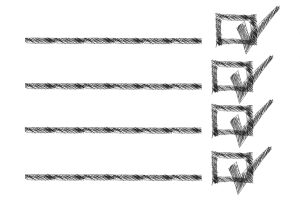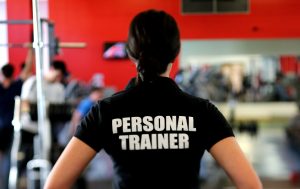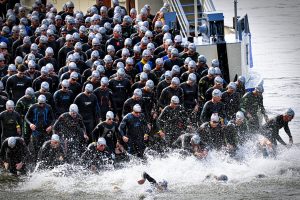Triathlon Recovery: Essential Strategies for Sustainable Performance
Recovery is as vital to triathlon success as the swim, bike, and run. An effective recovery plan allows the body to repair, adapt, and come back stronger after training. In this post, we’ll cover the key components of a comprehensive recovery strategy, including signs of overtraining, stretches, nutrition, race recovery, and guidelines for safely returning to training after injury.
1. Integrated Recovery in Your Training Plan
Integrated recovery means scheduling regular rest and lower-intensity days within your training plan. Balancing high-intensity workouts with adequate recovery is essential for maintaining long-term performance and avoiding burnout.
Key Components of Integrated Recovery:
- Rest Days: At least one full day of rest each week is recommended, allowing muscles and the central nervous system to recuperate.
- Recovery Workouts: Light, low-intensity sessions like easy swims, cycling at a conversational pace, or yoga are great for promoting blood flow and reducing muscle stiffness.
- Periodisation and Tapering: Adjust training volume based on your competition schedule. Plan for a gradual taper in training before races to ensure you’re rested and ready.
Regular recovery gives the body time to adapt to training stresses, reduces injury risk, and prevents overtraining, which can derail progress and affect overall health.
2. Recognising Signs of Overtraining
Overtraining happens when training volume or intensity exceeds the body’s ability to recover. This can lead to reduced performance, fatigue, and even chronic injuries. Recognizing the signs early helps prevent setbacks.
Common Signs of Overtraining:
- Persistent Fatigue: Constant tiredness, even after rest days, can be a red flag.
- Decreased Performance: If your pace, strength, or endurance drops despite consistent training, it may signal overtraining.
- Sleep Issues: Difficulty falling asleep, restless sleep, or waking up unrefreshed are common symptoms.
- Increased Resting Heart Rate: A consistently higher morning heart rate can indicate that the body is under stress.
- Irritability and Mood Changes: Physical fatigue affects mental health, leading to irritability, lack of motivation, or even depression.
- Frequent Illness or Injury: Overtraining weakens the immune system, making you more susceptible to illness and injury.
If you’re experiencing several of these symptoms, reduce your training intensity or take a few days off to allow full recovery. Listening to your body is essential for longevity in triathlon.
3. Stretches and Exercises for Recovery
Stretching and mobility exercises play a vital role in recovery, improving flexibility, reducing muscle soreness, and supporting joint health. Have a look at our Strength Training post for more detail.
Recommended Stretches:
- Hamstring Stretch: Keeps the back of the legs flexible, reducing strain on the lower back and aiding in efficient running.
- How to do it: Sit with one leg extended, reach toward your toes, and hold for 20-30 seconds.
- Hip Flexor Stretch: Helps counteract tightness caused by cycling.
- How to do it: Lunge forward with one leg while keeping the back knee on the ground. Push hips forward gently, feeling the stretch in the front of the hip.
- Calf Stretch: Essential for runners, as tight calves can lead to Achilles tendon issues.
- How to do it: Stand with one foot forward, press the back heel down, and lean forward to feel the stretch in the calf.
- Upper Back Stretch: Relieves tension from the swimming motion.
- How to do it: Clasp hands in front, round your back, and gently pull shoulders forward.
Foam Rolling and Massage: Foam rolling or using massage tools like lacrosse balls can reduce muscle stiffness and improve circulation. Common target areas include calves, quads, IT bands, and upper back. Roll slowly over sore areas and focus on areas where you feel tension.
Low-Intensity Exercises:
- Yoga or Pilates: These practices incorporate stretching, balance, and breathing exercises, which improve flexibility, core strength, and mental relaxation.
- Core Strength Workouts: A strong core supports form and stability. Include exercises like planks and bridges in recovery sessions to maintain core strength without overloading muscles.
4. Nutrition to Support Recovery
Proper nutrition speeds recovery by providing the body with the nutrients it needs to repair and rebuild muscles. Have a look at our Nutrition post for more detail.
Key Nutrients for Recovery:
- Protein: Essential for muscle repair and recovery. Aim for 20-30g of protein in the hour post-workout from sources like lean meats, eggs, dairy, or plant-based options like beans and tofu.
- Carbohydrates: Carbs replenish glycogen stores depleted during training. Aim for 1-1.5g of carbs per kilogram of body weight within two hours post-exercise.
- Healthy Fats: Fats aid in overall recovery and reduce inflammation. Incorporate sources like avocados, nuts, seeds, and olive oil in your diet.
- Electrolytes and Hydration: Rehydrate with water and include electrolytes, especially after intense workouts or hot-weather training. Foods like bananas, spinach, and potatoes provide natural electrolytes like potassium and magnesium.
Sample Recovery Meal: A smoothie with protein powder, Greek yogurt, berries, spinach, and almond milk provides an ideal combination of protein, carbs, and antioxidants for muscle repair.
5. Recovery Tech: Tools to Enhance Recovery and Reduce Fatigue
Advancements in recovery technology offer triathletes new ways to speed up muscle repair, reduce soreness, and enhance overall recovery. Devices like leg compression boots, red light therapy, and percussion massagers are increasingly popular among athletes looking to optimise recovery. Compression boots (e.g., Normatec) use air pressure to improve circulation and reduce lactic acid buildup in the legs, making them ideal after intense training sessions or races. Red light therapy panels promote cellular repair and reduce inflammation, which can speed up recovery and support soft tissue healing. Percussion massagers (e.g., Theragun) provide deep tissue relief by targeting sore muscles, helping to break up adhesions and relieve tension. While recovery tech can be a valuable addition to a training routine, it’s most effective when combined with foundational recovery practices like rest, hydration, stretching, and proper nutrition. Integrating these tools into a recovery plan can help triathletes feel refreshed, reduce downtime, and keep their training on track.
6. Race Recovery
Recovering after a race involves a different approach than regular post-training recovery, as races often push your body to its limits.
Immediately After the Race:
- Rehydrate and Refuel: Drink water with electrolytes and consume a snack with protein and carbs within 30 minutes to kickstart recovery.
- Stretch and Walk: Gently stretch and walk to prevent muscle stiffness. Avoid sitting immediately after the race, as it can increase soreness.
Post-Race Recovery Plan:
- 24-48 Hours Post-Race: Focus on rest and light movement, such as walking, swimming, or gentle cycling to promote blood flow. Continue eating balanced meals with extra emphasis on protein and anti-inflammatory foods.
- 3-5 Days Post-Race: Reintroduce easy, low-intensity sessions to ease back into training. Include gentle stretches and foam rolling to manage muscle tightness.
- One Week Post-Race: If you’re feeling recovered, gradually return to regular training intensity. If you’re still sore or fatigued, continue with lighter sessions.
7. Time Between Races
The time required to fully recover between races varies based on distance, intensity, and individual factors like age and fitness level.
Guidelines for Recovery Time Between Races:
- Sprint Triathlon: 1-2 weeks
- Olympic Triathlon: 2-3 weeks
- Half-Ironman: 4-6 weeks
- Ironman: 6-8 weeks or longer
During this recovery period, keep training light and focus on maintaining fitness rather than intense progression. Respecting recovery time between races helps prevent burnout and injury, allowing you to perform optimally in each event.
8. Returning to Training After an Injury
Injury recovery requires a cautious, phased approach to prevent re-injury and regain strength. Here’s a step-by-step approach to getting back to training safely.
- Get Medical Clearance: Consult a doctor or physical therapist before resuming training to confirm that the injury has healed.
- Start with Low-Impact Activities: Begin with low-impact exercises like swimming or cycling to ease back into movement without straining the injured area.
- Gradual Load Increase: Increase volume and intensity gradually, typically following the “10% rule” (no more than a 10% increase in training load per week).
- Incorporate Rehabilitation Exercises: Continue exercises provided by your physical therapist to strengthen muscles around the injured area, supporting recovery.
- Listen to Your Body: Minor discomfort can be normal during recovery, but sharp pain or swelling indicates you may need more rest. Don’t rush the process.
Returning to training after an injury can be mentally challenging, but patience and consistency are key to avoiding setbacks and ensuring a full recovery.
8. Recovery as a Foundation for Triathlon Success
Building recovery into your training plan is essential for sustainable progress, injury prevention, and peak performance. Here’s how recovery contributes to long-term success:
- Increases Adaptation: Recovery allows muscles to repair and adapt, increasing strength and endurance.
- Reduces Injury Risk: Rest days, low-intensity workouts, and proper nutrition support the body, helping to avoid overuse injuries.
- Improves Mental Resilience: Regular rest prevents burnout and maintains motivation, which is crucial for the long haul in triathlon training.
By integrating recovery practices, monitoring for overtraining, and prioritising rest after races, you set a strong foundation for consistent improvement. TriReady is here to support your journey, helping you optimise recovery, stay injury-free, and reach your triathlon goals with confidence. Embrace recovery, listen to your body, and enjoy the process!



